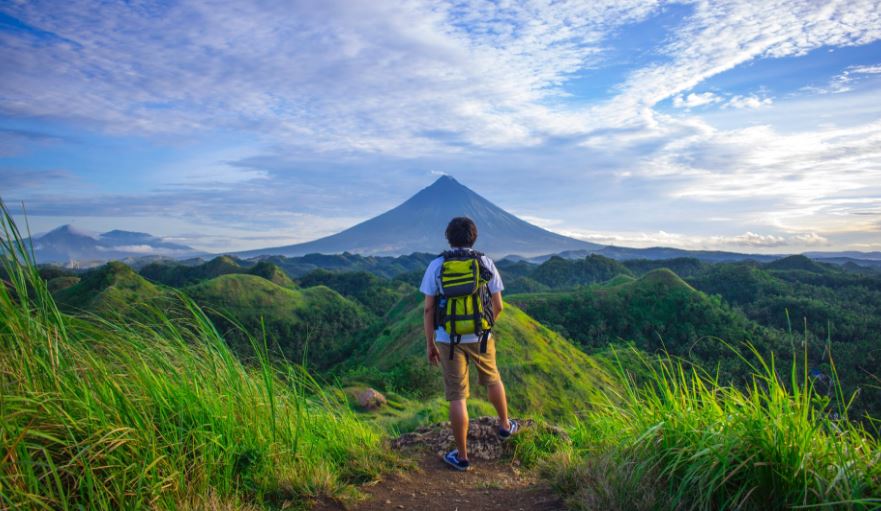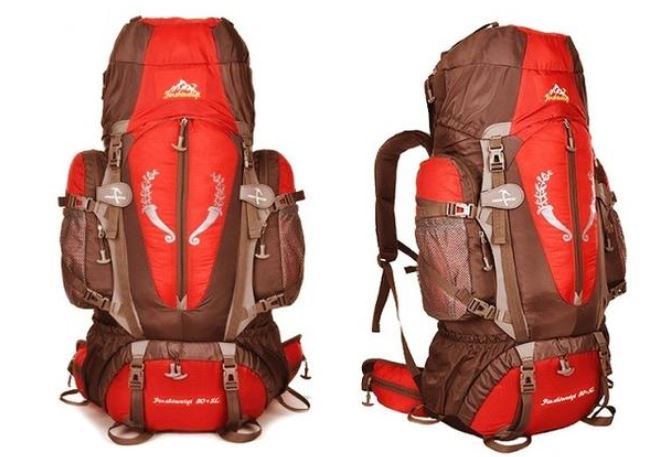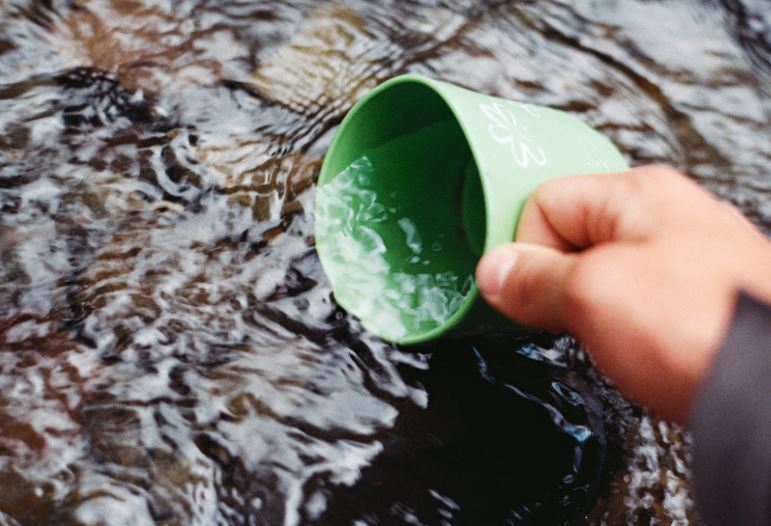Fishing, Hunting and Camping
Tips, articles and reviews by people like you.
Reliable Power Sources for Camping and Off-grid Survival
Whether you are a weekend camper or considering to live off-grid, one of the most important items to have is reliable power. You obviously won’t be able to rely upon the local utility company so you will need to explore all of the possibilities to keep the electricity flowing. While there are many different options, you want to have something safe, sustainable and easy to maintain. Being out in the wilderness does not mean that you have to leave all of your comforts behind – with these power systems you can be self-sufficient and ready for anything.
With advances in technology, there are great options for all kinds of budgets and prepping needs. Your overall choices of power sources include:
- Solar – clean, sustainable and easy to maintain
- Wind – sustainable, clean and dependable
- Batteries – affordable, simple to install and consistent

Battery Jump Starter Kit
Having a portable source of power is important when you are out camping or need it for your survival. A handheld jump starter kit can keep your vehicle running and supply 14,000 mAh of power to USB devices such as mobile phones, laptops and other electronics. No more waiting for tow trucks in a remote area – you can simply start your own vehicle using this starter kit. A must for anyone who regularly enjoys the outdoors!

Solar Generator
If you are looking for sustainable power that you can rely upon in an emergency situation, a Lion Safari ME Solar Generator is the answer. With zero emissions or greenhouse gases, you can rest assured that it is environmentally safe. This solar generator is fast delivering up to 2000 W for 922 W hours and can recharge in under 90 minutes. It is expandable, easy to transport, can hold a charge for up to a year and produces very little noise. The Lion Safari ME is a solid choice for your primary power source for an extended camping trip or for off-grid living.

Wall Mounted Battery Banks
Be confident about your energy storage with the Iron Edison’s Re-Volt Lithium Iron Phosphate Batteries. These battery banks easily outperform lead acid batteries in terms of size, weight, life cycle and discharge rates. They are maintenance-free and can be easily installed to new or existing solar systems. The life expectancy is forty years and up to 15 of these batteries can be added together for a comprehensive power storage solution.

Portable Handheld Battery Backup and 110v Power Socket with USB Ports
Finding a reliable and portable power source can be challenging. Not so with the Lion Cub Go. Perfect for hikers and backpackers, it is lightweight, renewable and doesn’t require any maintenance. It can accommodate cameras, laptops, phones, lamps and so much more. The long-long lasting battery can last up to a year and provides a 110v power socket and two 5.34V USB ports.
Having reliable power in the wilderness is critical. Each one of these power sources have their own pros and cons, so assess your needs to determine which one is right for you. If you really want to be prepared, consider implementing one primary source of power with a backup system just in case. Ambertracks Technology can bring you all of these solutions and much more for the USA www.ambertracks.com
Day Hiking Backpack Checklist

If you plan on day hiking on your next camping trip, having the right gear is important. Today, we are going to go over what items you want to make sure to have with you, even if only out for a few hours. You don’t want to get caught in the middle of nowhere not being prepared. So let’s get started!
Backpack
If you will be hiking for the day, you will need the right type of backpack. I mean, you need to have a place to store everything we will be going over below. Taking the right kind of backpack is important as well. You want something that is laid out in a way that everything has a place to be.

Backpack tips
A bright colored backpack can help you be seen if you are in trouble and people are searching for you. Using a dark colored or camouflage backpack will work if you also use it for hunting but if not, go with a bright color. If you do go dark, make sure to pack a bright (hunter orange) color rag just in case.
You want to get a backpack that has a lot of room but comfortable to carry around all day. Pictured above is a large outdoor hiking backpack that has plenty of room and pockets for everything you may need.
Things to think about when buying a hiking backpack are: will you even hike camp (do you need room for a tent like above)? Does it have room for everything you need? Is it too big (how much can you carry)?
Navigation
Heading out in unfamiliar land without anything to help you get around is just kinda dumb. How many news reports have you seen about hikers getting lost with search parties being sent out to find them? You cannot depend on having phone service when in the woods or underpopulated areas. It is important to know where you are and how to get back.
Map
Taking a map that has local landmarks is a good idea. You can usually find these at local tourist stations. Make a note of landmarks on the map as you head out so you can look for them if lost on your way back.
Compass

Compasses are not used nearly as much as they should be. Having a compass will help when trying to read a map. Knowing which way is what can help you confirm landmarks in a specific direction. A compass app can be found on most (if not all) smart phones. One thing to remember is that if your phone dies, you will not have a compass. A small pocket compass is cheap and well worth the little space it will take in your backpack.
GPS
A real GPS is always a smart idea and can replace your map and compass. You can not rely on your phone GPS, you would want a dedicated device strictly for this. Just make sure it has a personal GPS locator function built into it.
Sun Protection
Even if you plan on hiking in the woods, sun lotion is a smart thing to pack. Have you ever got sun burned on a cloudy day? Being hidden under trees will protect you but if you will be in open areas, you will wish you had it. It is smart to pack a small tube of sun lotion that doesn’t take much room and will not add unneeded weight to your pack.
It is recommended not to use spray lotion for a couple reasons. One, you will be taking arousal into nature. Second, more and more people are having chemical reactions to them. You do not want to be too far out if you have one. This happened to me nephew and it was BAD!
Extra Clothes
You may not think of something like an extra pair of clothes as something you will need, but it is. Weather changes, it could be cool when you leave but become very hot. Or, it could be a nice day and the sun goes down quicker than you thought. Preparing for the weather can ave you from suffering weather changes.
What if you run into the perfect swimming creek or pond? I bet you will be kicking yourself that you didn’t bring an extra pair of your skimmies (bra/undies)!
What if it rains? Do you have a poncho? They are light and easy to pack.
Lastly, pack a pair of work gloves. You can thank me later.
Emergency/Survivor Gear

Even if you are going out for a few hours, having some basic survivor gear can save your life. Just a few simple things can be the difference between life and death in case of an emergency. Here is what I carry:
- Knife (both pocket and larger K-Bar type for cutting wood)
- Flashlight with fresh batteries
- Flint or small box of waterproof matches
- Small radio with crank power (for weather if you get stuck)
- Multi-tool like a Leatherman or Gerber
- First-aid kit with extra tape that can be used in making a splent
- Whistle
- A few MRE’s (meals ready to eat) in case you are stuck overnight or two
- Water sanitize tablets
- Small tarp to make shelter if needed
- Rappelling rope
- Pistol (if laws allow and you have your CCW) since you never know what you will run into
Water and Protein

You will of course take water on your hike, but make sure to take enough to last. You need plenty of water to stay hydrated but water is heavy! A gallon of water weighs over 8 pounds, and that’s a lot of weight to add to your pack.
Using a water bottle that has a built in filter not only make hiking fun by refilling from lakes and streams, it also cuts real pounds from your back. The technology of today is awesome! Here is one from Amazon that gets great reviews.
Besides water, protein is just as important. Staying hydrated and fueled will keep you energetic and keep you feeling good. packing things like jerky, protein bars or a jar of peanut butter will make sure you will have the power throughout the day.
Overview
So, above we covered a checklist of things to take on a day hike. You may think of your hike as harmless fun but all you have to do is watch the news to see what type of things that can happen while out. The above may sound like overkill but being prepared is being responsible. Your friends and family want you to come back!
So a quick overview of things you need:
- good backpack with plenty of room
- map and compass
- sun protection
- extra clothes or at least socks
- poncho
- emergency and survival gear including: knife, flashlight, fire starter, radio, multi-tool, whistle, MRE, water tablets, small tarp, rope and firearm (if allowed, have CCW and in a area with predators)
- water bottle with filter
- protein snacks like jerky
Stay safe and enjoy Mother Nature!




